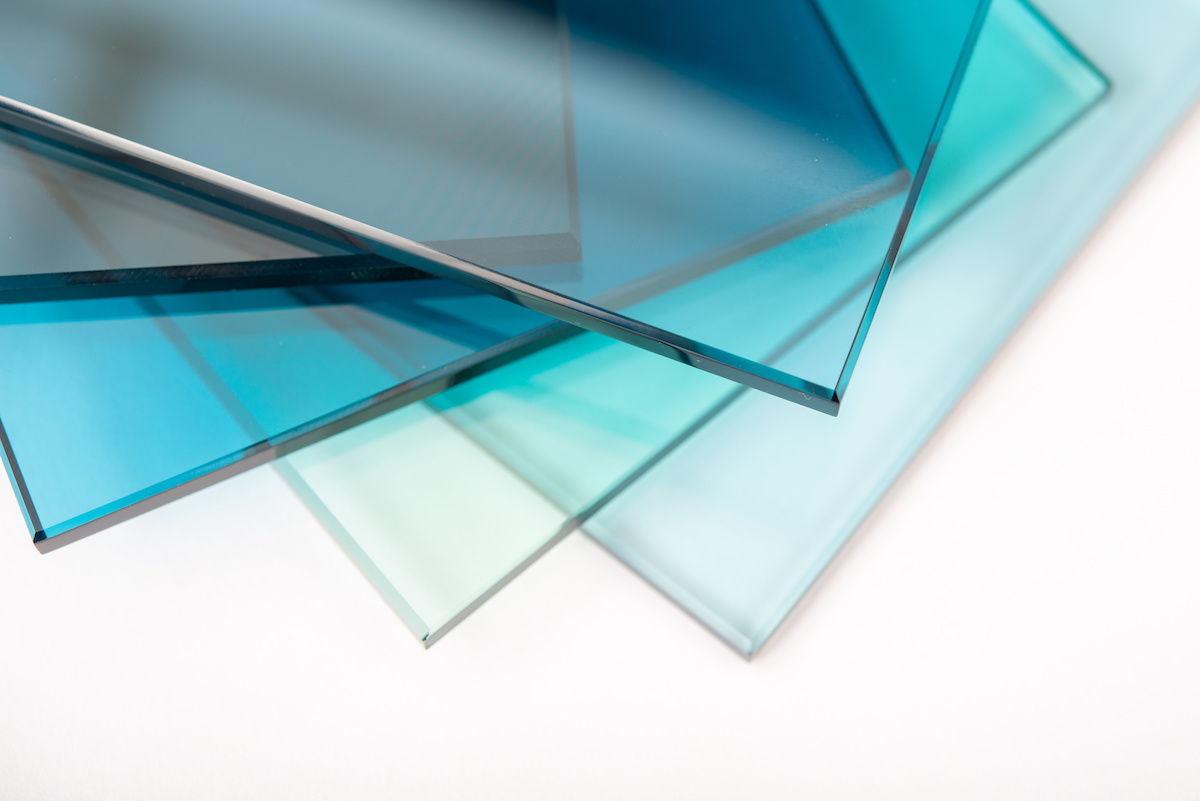
The word “glass” has a rich etymology that reflects its long and fascinating history. The word can be traced back to the Old English word “glæs,” which is derived from the Proto-Germanic word “glasam.” This word originally referred to “amber,” which is a type of fossilized tree resin that has a yellowish-orange color similar to that of some of the earliest forms of glass.
The earliest evidence of glassmaking dates back to around 3500 BCE in Mesopotamia. The Mesopotamians were known for creating small decorative objects such as beads and amulets made from glass. They used a technique called core-forming, which involved wrapping hot glass around a clay core to create the desired shape. Over time, glassmaking techniques spread to other parts of the world, including Egypt, Greece, and Rome.
The ancient Egyptians were among the first to use glass in their jewelry and as decorative objects. They created colorful glass beads, amulets, and vessels using a technique called faience, which involved mixing crushed quartz or sand with other minerals to create a paste that was molded into the desired shape and then fired in a kiln. The Egyptians also developed a technique called blown glass, which allowed them to create intricate vessels and containers.
The technique of glassblowing was developed by the Romans in the 1st century BCE. Glassblowing allowed for the creation of larger and more complex vessels than was possible with earlier techniques. Glassblowers used a blowpipe to inflate a molten glass bubble, which could then be shaped and manipulated into various forms. This technique revolutionized the glassmaking industry and spread throughout the Roman Empire.
The Venetians became known for their exquisite glasswork in the 13th century. Venetian glassmakers were particularly skilled in creating glass with intricate patterns and designs, using techniques such as filigree and millefiori. They also developed new types of glass, such as cristallo, a clear glass that was highly prized for its transparency and purity.
The first eyeglasses were made in Italy in the 13th century. These early glasses were made by hand, and the lenses were often convex or concave in shape. Eyeglasses became more widely available in the 15th century, and by the 18th century, mass production techniques had made them affordable for the general population.
The invention of the telescope in the 17th century was made possible by the development of high-quality lenses made of glass. The ability to produce lenses with greater precision and accuracy allowed astronomers to see further and more clearly into the heavens. The telescope revolutionized the study of astronomy and led to many new discoveries about the universe.
The first glass mirrors were produced in the 16th century. These mirrors were made by coating the back of a sheet of glass with a reflective material such as mercury or tin. The invention of the glass mirror revolutionized interior design and allowed people to see themselves more clearly than ever before.
The world’s largest single pane of glass measures 107 meters long and 16.5 meters wide, and it can be found at the China Glass Bridge in Hebei province. The glass bridge spans a canyon and offers breathtaking views of the surrounding landscape. The bridge is made of laminated glass, which is made by sandwiching layers of glass with a clear plastic interlayer to increase its strength and durability.
Glass fibers were first used in communication cables in the 1950s. Glass fibers are made by drawing thin strands of glass through a special machine, which can create fibers that are thinner than a human hair. These fibers are highly durable and can transmit information over long distances without losing clarity or quality.
The first safety glass was developed by French chemist Édouard Bénédictus in 1903. Safety glass is made by sandwiching a layer of plastic or resin between two sheets of glass. This type of glass is designed to break into small, blunt pieces when shattered, reducing the risk of injury.
Glass can take over 4,000 years to decompose in a landfill. This is because glass is made from materials that are not biodegradable, such as sand, soda ash, and limestone. As a result, glass can take up a significant amount of space in landfills, and it can also release harmful chemicals into the environment if it is not properly recycled.
Glass is a highly versatile material that is used in a wide range of applications, including construction, transportation, and electronics. Its unique properties, such as transparency, hardness, and resistance to corrosion, make it an ideal material for many different uses.
The term “glass ceiling” was coined in the 1980s to describe the invisible barrier that prevents women and minorities from advancing to higher levels of leadership in organizations. The term is still used today to describe the systemic barriers that prevent certain groups from achieving their full potential.
Glass is a common material used in the manufacturing of solar panels. Solar panels are made up of photovoltaic cells, which convert sunlight into electricity. These cells are made from silicon, which is often coated with a layer of glass to protect them from the elements and to increase their efficiency.
The largest stained glass window in the world is located in the Cathedral of Saint Mary of the See in Seville, Spain. The window measures 42 meters high by 18 meters wide and features intricate designs and vibrant colors.
According to the International Energy Agency (IEA), the glass sector is responsible for approximately 4% of global energy-related carbon dioxide emissions. This is equivalent to around 900 million tonnes of carbon dioxide per year. As such, reducing energy consumption and greenhouse gas emissions in the glass industry is a major priority for sustainability efforts.
Glass can be recycled indefinitely without losing quality or purity. This means that glass bottles and containers can be melted down and used to make new glass products, reducing the amount of waste in landfills and conserving natural resources.
Glass can be used to create art in a variety of forms, including blown glass sculptures, stained glass windows, and fused glass pieces. Glass artists use a range of techniques to manipulate and shape glass, creating intricate designs and unique works of art.
The world’s largest collection of glass is housed at the Corning Museum of Glass in New York. The museum features over 50,000 glass objects spanning over 3,500 years of glassmaking history. The museum attracts over 460,000 visitors each year and features a wide range of exhibits, live demonstrations, and educational programs that explore the art, science, and history of glass.
Glass is used in the manufacturing of many modern-day gadgets, including smartphones, tablets, and televisions. Glass screens are used to protect these devices from scratches and other forms of damage, and they also allow for touch-sensitive interfaces.
The world’s largest chandelier is located in the Sultan Qaboos Grand Mosque in Muscat, Oman. The chandelier measures 14 meters in diameter and 8 meters in height and is made up of over 600,000 pieces of Swarovski crystal and glass.
In 1959, Robert S. Mulliken invented the first commercially successful glass fiber. This invention revolutionized the field of telecommunications by enabling faster and more efficient data transmission. Glass can be used to create optical fibers, which are thin strands of glass drawn through a special machine and coated with a layer of cladding to protect them from damage. These optical fibers are widely used in telecommunications to transmit information over long distances, thanks to their ability to transmit data using light signals.
Glass is used in the manufacturing of many medical devices, including syringes, vials, and test tubes. Glass is a preferred material for these applications because it is non-reactive, inert, and can withstand high temperatures and pressures.
The glass industry is a significant contributor to the global economy, generating over $100 billion in annual revenue. Glass products are used in a variety of industries, including automotive, construction, and electronics.
In 2019, the global production of container glass (i.e., glass bottles and jars) reached approximately 195 billion units, according to data from the Glass Packaging Institute. This reflects the continued demand for glass packaging in the food, beverage, and pharmaceutical industries, among others.
Greenhouses made of glass can provide plants with up to 90% of the natural light they need to grow, depending on the type of glass used and the location of the greenhouse. This can be significantly more light than plants would receive outside, especially in areas with limited sunlight or long, dark winters. Additionally, glass greenhouses can maintain consistent temperatures between 15-26°C (59-79°F), which can be beneficial for growing certain crops year-round.
According to the Glass Packaging Institute, as of 2021, the glass recycling rate in the United States was approximately 33%, meaning that only one-third of all glass produced in the country was recycled. However, there is still much potential to increase this rate and reduce waste in landfills through increased glass recycling efforts.








